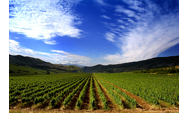|
||||||||||||||
Land
usage and impact on climate Land
usage impacts on climate directly and indirectly, most obviously through
deforestation and reforestation, but also in terms of what new use land
is put to and whether this is predominantly agricultural or industrial.
The Stern Review focuses on reversing emissions from land use change. Change
of land use can deal a double blow in that deforestation followed by industrialisation
both removes a prior carbon sink AND replaces it with a carbon source along
with scope for other negative climate effects. In this respect there are
marked contrasts in different developing regions of the world. In China’s
rapid development for example, over farming, over grazing, deforestation
and industrialisation have jointly lead to observable degradation of the
atmosphere and climate (see graphic satellite images in first link). Land
usage impacts on climate directly and indirectly, most obviously through
deforestation and reforestation, but also in terms of what new use land
is put to and whether this is predominantly agricultural or industrial.
The Stern Review focuses on reversing emissions from land use change. Change
of land use can deal a double blow in that deforestation followed by industrialisation
both removes a prior carbon sink AND replaces it with a carbon source along
with scope for other negative climate effects. In this respect there are
marked contrasts in different developing regions of the world. In China’s
rapid development for example, over farming, over grazing, deforestation
and industrialisation have jointly lead to observable degradation of the
atmosphere and climate (see graphic satellite images in first link).If 70% of the earth is covered by water, then land accounts for 30% hence it is not surprising that the IPCC published a special report on “Land Use, Land-Use Change and Forestry” in 2000 or that disturbing data from the United Nations Environment programme focused on World and selected country CO2 emissions arising from land use change. Whilst human behaviour is a major cause of land use change, “natural” change can impact e.g., volcanic activity, biological impact (e.g. species migration) and some forest fires (e.g. Borneo). Indeed land use is altered through climate change itself through temperature, wind and rainfall changes, again showing the complex nature of the interactions and the involvement of feedback. For the geographer therefore this lack of clear understanding continues to hamper fields from geophysics and agronomy to ecology and socioeconomics. Urbanisation, demographic shifts, and other features of developing nations may cause or respond to climate change, but effects range much further in human geography, since the impact of land use change AND climate change alter population densities, mortality, health and more abstract dimensions like well being, individual aspiration and thus politics. Whilst deforestation, reforestation and afforestation dominate the land use debate, IPCC best practice guidance offers details on many different types of land including cropland, grassland, wetland, settlement and land for other uses. Moreover, today, we need to revise notions of crops and forest timbers in the light of developments e.g. growing species which have not been of commercial interest in the past. Despite the problems, there are exciting new opportunities in this context as well as new issues especially where genetically modified species are concerned. |
||||||